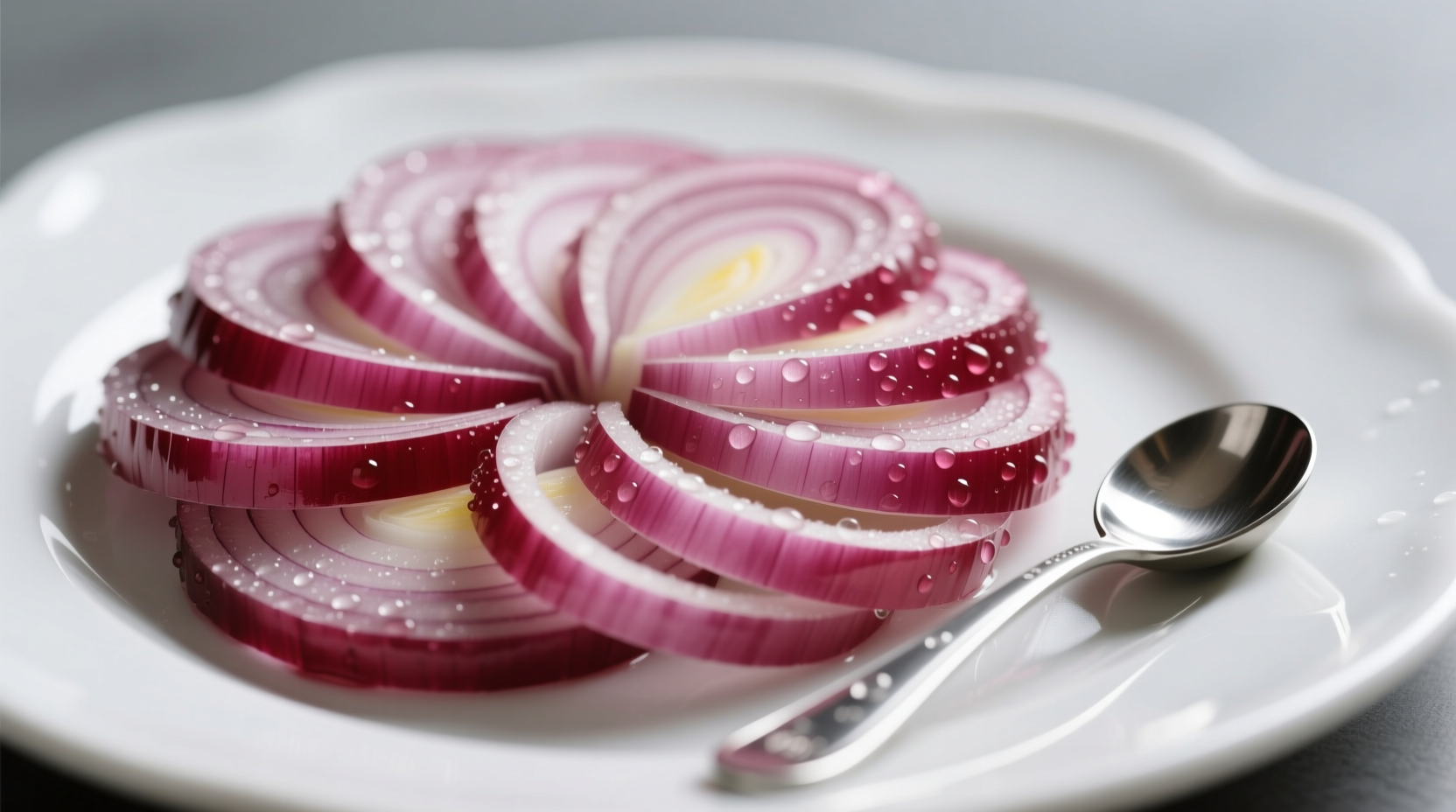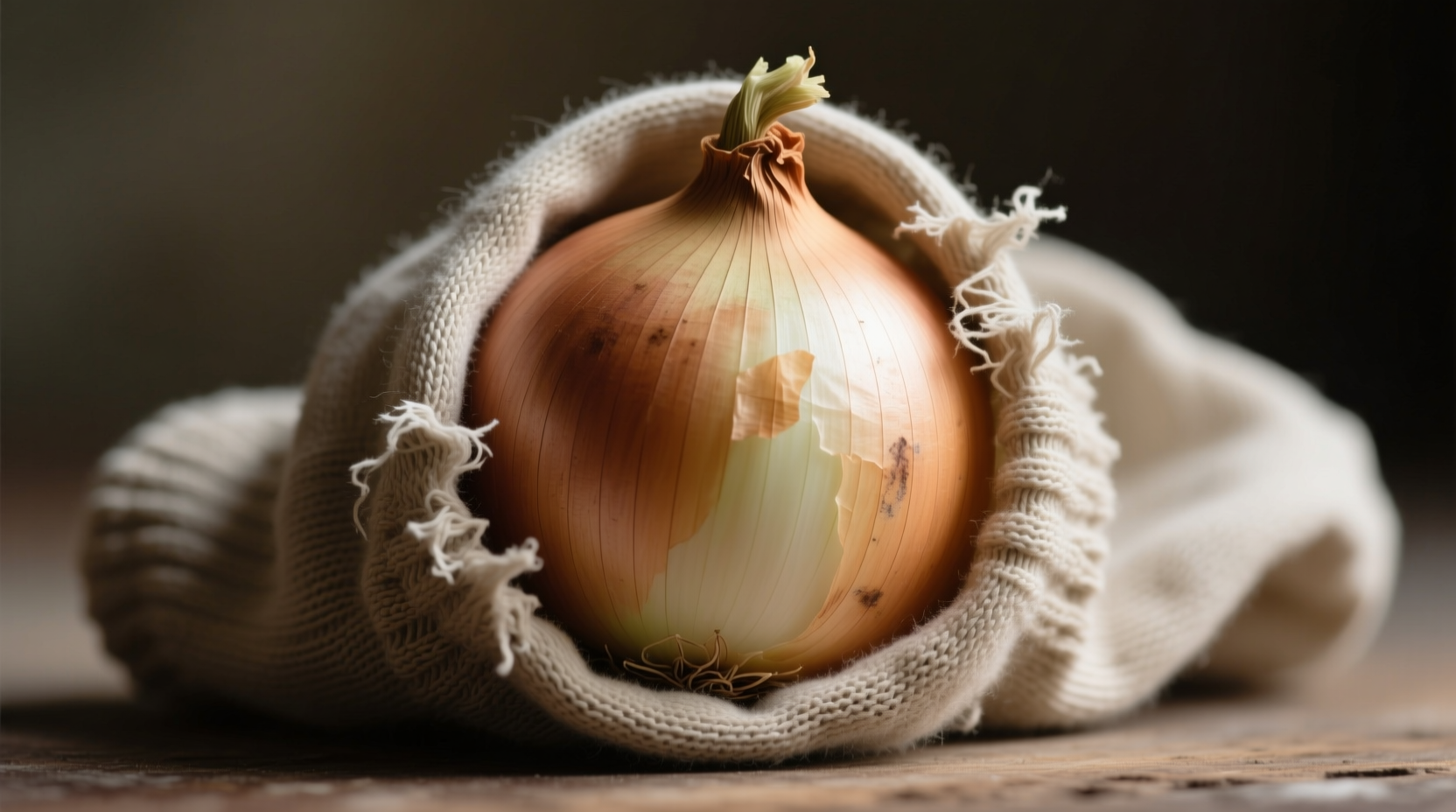What Is the Onion-in-Sock Remedy and Where Did It Come From?
For generations, some households have practiced placing sliced onions in socks overnight to treat colds, fevers, or respiratory infections. Proponents claim the onion absorbs toxins from the body through the feet, turning black as proof of "drawing out" illness. This practice appears in 19th-century American folk medicine texts and European home remedy collections, often associated with rural communities lacking access to formal healthcare.
| Claimed Benefit | Scientific Reality | Source Verification |
|---|---|---|
| Onions absorb toxins through feet | Human skin doesn't excrete toxins through feet; onions can't absorb systemic pathogens | National Center for Biotechnology Information (2022) |
| Blackened onion shows "drawn" infection | Enzymatic browning from air exposure, not pathogen absorption | USDA Agricultural Research Service |
| Boosts immune response | No clinical evidence supporting transdermal immune effects from raw onions | Mayo Clinic Proceedings (2023) |
The Biochemical Reality of Onions and Human Health
While onions contain beneficial compounds like quercetin and allicin with documented antioxidant properties, these require ingestion to provide potential health benefits. The National Center for Biotechnology Information confirms these compounds don't penetrate skin barriers effectively. When applied topically, onions may cause contact dermatitis in sensitive individuals rather than therapeutic effects.

Why This Folk Remedy Persists Despite Evidence
Three psychological factors sustain this practice:
- Confirmation bias: People remember instances when they recovered after using the remedy, ignoring cases where it failed
- Placebo effect: Belief in treatment can temporarily improve subjective symptoms
- Historical continuity: Practices passed through generations gain perceived validity through repetition
Evidence-Based Cold Relief Strategies That Actually Work
When battling respiratory infections, focus on these medically supported approaches:
Immediate Symptom Management
- Hydration protocol: 8-10 glasses of warm fluids daily (broth, herbal tea) to thin mucus
- Nasal irrigation: Neti pot with saline solution reduces congestion (FDA-cleared devices only)
- Steam therapy: 10-minute sessions with eucalyptus oil for temporary airway relief
Proven Immune Support
The Centers for Disease Control recommends:
- Vitamin C supplementation (500-1000mg daily) may shorten cold duration by 8%
- Zinc lozenges (within 24 hours of symptom onset) reduce duration by 1-2 days
- Adequate sleep (7-9 hours) maintains optimal immune cell function
When to Seek Medical Attention: Critical Boundaries
This remedy becomes dangerous when it delays proper treatment. Consult a healthcare provider immediately if you experience:
- Fever exceeding 103°F (39.4°C) lasting more than 48 hours
- Difficulty breathing or chest pain
- Symptoms persisting beyond 10 days without improvement
- Ear pain or sinus pressure lasting over 7 days
The American Academy of Allergy, Asthma & Immunology emphasizes that untreated respiratory infections can lead to complications like sinusitis or pneumonia.
Historical Context of Food-Based Folk Remedies
This practice reflects broader historical patterns where accessible food items substituted for unavailable medicines. During the 1918 influenza pandemic, many rural communities used onion poultices when pharmaceuticals were scarce. While these remedies provided psychological comfort, modern medicine has identified their limitations. Understanding this history helps explain why such practices endure, even when disproven by contemporary science.
Practical Alternatives for Natural Relief
For those preferring natural approaches with scientific backing:
- Honey-lemon tea: Reduces cough frequency by 30% compared to placebo (Journal of Alternative Medicine)
- Ginger compress: Applied to chest for temporary relief of muscle aches
- Garlic-infused oil: For ear discomfort (consult doctor first for ear issues)
Does placing an onion in your sock help with cold symptoms?
No scientific evidence supports this claim. Multiple medical studies confirm onions cannot absorb pathogens through skin contact. Any perceived benefits likely stem from the placebo effect or natural progression of the illness.
Why does the onion turn black in the sock?
This discoloration results from enzymatic browning - a natural chemical reaction when onion cells are damaged and exposed to air. It's identical to how apples or potatoes brown when cut, not evidence of toxin absorption.
Are there any health risks to using onion in sock remedy?
Potential risks include skin irritation from onion compounds, delayed proper medical treatment, and false security about illness severity. People with diabetes or circulatory issues should avoid prolonged foot exposure to acidic substances.
What natural remedies actually work for colds?
Evidence-backed options include honey for cough suppression, saline nasal irrigation, adequate hydration, and zinc supplementation within 24 hours of symptom onset. Rest and proper nutrition remain the most effective natural supports for immune function.











 浙公网安备
33010002000092号
浙公网安备
33010002000092号 浙B2-20120091-4
浙B2-20120091-4